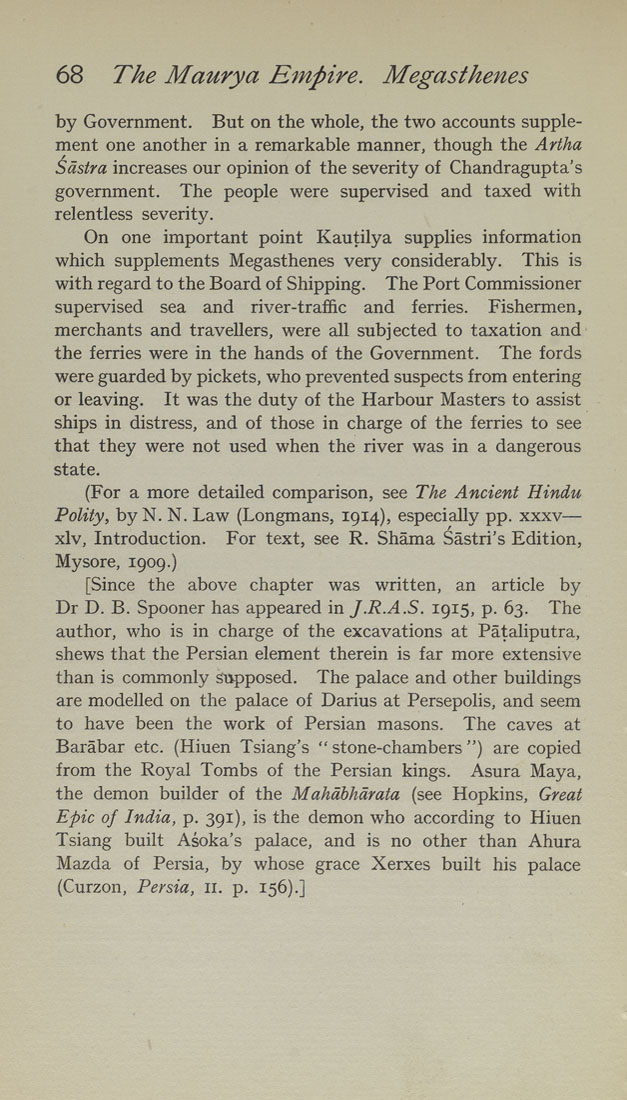68 The Maurya Empire. Megasthenes
by Government. But on the whole, the two accounts supple¬
ment one another in a remarkable manner, though the Artha
Sdstra increases our opinion of the severity of Chandragupta's
government. The people were supervised and taxed with
relentless severity.
On one important point Kautilya supplies information
which supplements Megasthenes very considerably. This is
with regard to the Board of Shipping. The Port Commissioner
supervised sea and river-traffic and ferries. Fishermen,
merchants and travellers, were all subjected to taxation and
the ferries were in the hands of the Government. The fords
were guarded by pickets, who prevented suspects from entering
or leaving. It was the duty of the Harbour Masters to assist
ships in distress, and of those in charge of the ferries to see
that they were not used when the river was in a dangerous
state.
(For a more detailed comparison, see The Ancient Hindu
Polity, by N. N. Law (Longmans, 1914), especially pp. xxxv—
xlv. Introduction. For text, see R. Shama Sastri's Edition,
Mysore, 1909.)
[Since the above chapter was written, an article by
Dr D. B. Spooner has appeared in J.R.A.S. 1915, p. 63. The
author, who is in charge of the excavations at Pataliputra,
shews that the Persian element therein is far more extensive
than is commonly supposed. The palace and other buildings
are modelled on the palace of Darius at Persepolis, and seem
to have been the work of Persian masons. The caves at
Barabar etc. (Hiuen Tsiang's " stone-chambers ") are copied
from the Royal Tombs of the Persian kings. Asura Maya,
the demon builder of the Mahdbhdrata (see Hopkins, Great
Epic of India, p. 391), is the demon who according to Hiuen
Tsiang built Asoka's palace, and is no other than Ahura
Mazda of Persia, by whose grace Xerxes built his palace
(Curzon, Persia, 11. p. 156).]
|








